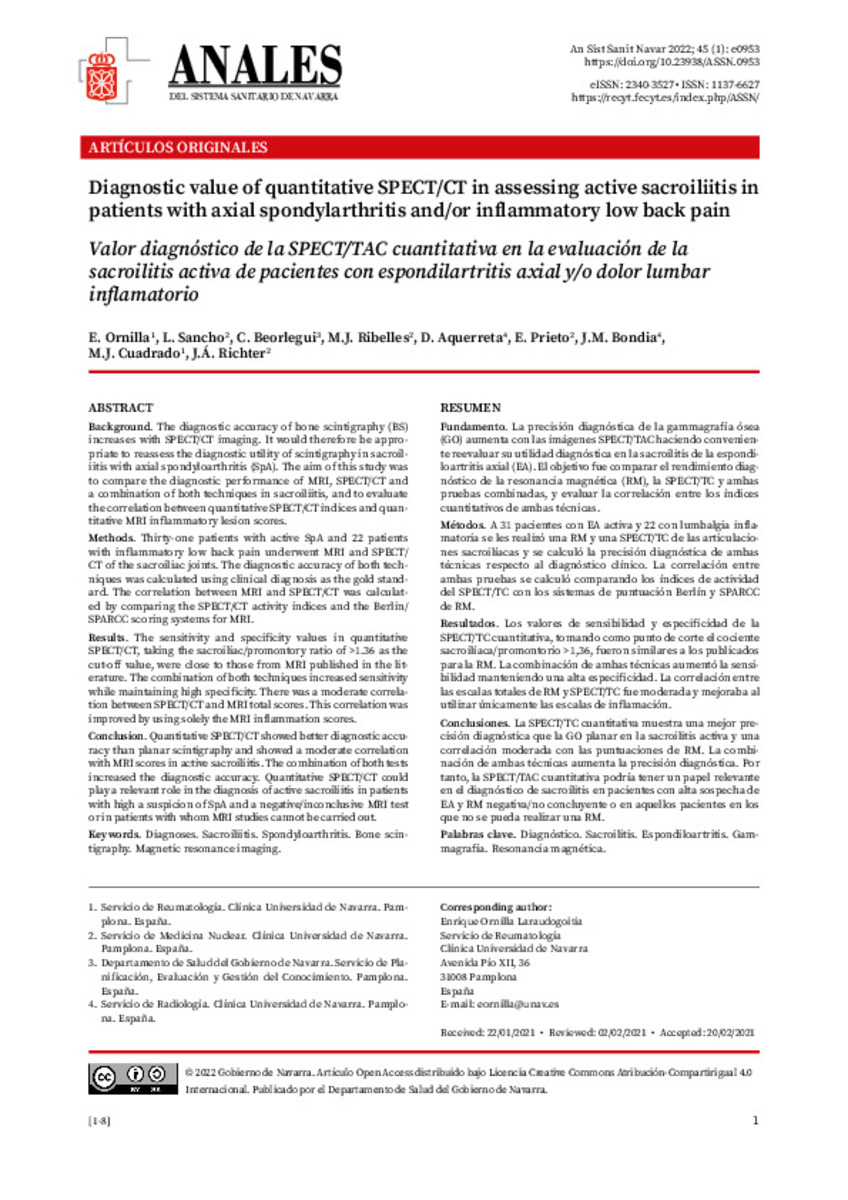Diagnostic value of quantitative SPECT/CT in assessing active sacroiliitis in patients with axial spondylarthritis and/or inflammatory low back pain
Keywords:
Diagnóstico
Sacroilitis
Espondiloartritis
Gammagrafía
Resonancia magnética
Diagnoses
Sacroiliitis
Spondyloarthritis
Bone scintigraphy
Magnetic resonance imaging
Publisher:
Gobierno de Navarra
Note:
Artículo Open Access distribuido bajo Licencia Creative Commons Atribución-Compartirigual 4.0
Internacional.
Citation:
Ornilla Laraudogoitia, E. T. (Enrique Tomás); Sancho, L. (Luis); Beorlegui, C. (Carmen); et al. "Diagnostic value of quantitative SPECT/CT in assessing active sacroiliitis in patients with axial spondylarthritis and/or inflammatory low back pain". Anales del sistema sanitario de Navarra. 45 (1), 2022, e0953
Statistics and impact
0 citas en

0 citas en

Items in Dadun are protected by copyright, with all rights reserved, unless otherwise indicated.







